143 found, showing page 5 of 10

The 'Grey Owl' is prized for its long-reaching branches and its silvery, grey-green foliage. It will reach 2-3' tall and 4-6' wide at maturity.
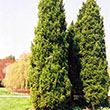
Eastern Red Cedar. The Eastern red cedar is a native variety that is admired for its dense, upright growth habit. It will reach 30-50' tall and 10-20' wide at maturity. Deer resistant and drought tolerant once established.
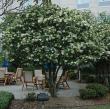
Japanese privet is a dense, fast-growing, evergreen shrub that will reach 8-12' tall and 6-8' white. It is a great option for creating dense hedging. Creamy-white flowers appear in spring.
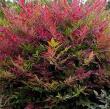
The 'Bonfire' has distinctively slender leaves that appear swirly when viewed up close. New foliage is vibrant orange-red, contrasting against the older, green foliage. Best color is achieved when planted in full sun. This variety stays compact, growing only 3' tall and wide.
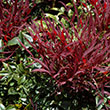
--
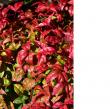
--
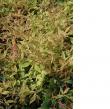
--
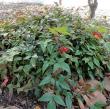
--
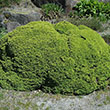
Little Gem' is a dwarf variety with a dense, globose habit. New growth is light-green and turns glossy, dark-green with age. Will reach 1-2' tall and 2-3' wide.
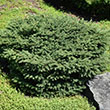
'Nidiformis' is a slow-growing, dwarf variety with thin, dark-gray needles. It has a dense, broad habit and will reach 3-4' tall and 6-10' wide at full maturity.

The 'Jean's Dilly' spruce is a dwarf variety that will get 3-5' tall and 1-2' wide. It is a great option for containers and small spaces. Its rich-green foliage is densely packed, giving it a neat appearance.

The 'Montgomery' is a slow-growing, semi-dwarf variety that will slowly reach 4-6' tall and 6-8' wide at maturity. It has a dense, spreading growth habit and is prized for its vibrant, blue-green foliage.
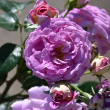
Height: 5 feet
Spread: 4 feet
Sunlight: full sun partial shade
Hardiness Zone: 4a
Group/Class: Floribunda Rose
Brand: Weeks Roses
Description:
Exciting lilac pink blooms that fade to lavender blue with a cream reverse; blooms constantly throughout the season and will make a stunning visual impact along walkways, borders, or in the garden; outstanding disease resistance
Ornamental Features:
Arctic Blue Rose features showy fragrant lilac purple flowers with gold eyes and a creamy white reverse at the ends of the branches from late spring to mid fall. The flowers are excellent for cutting. It has forest green deciduous foliage. The glossy oval compound leaves do not develop any appreciable fall color.
Landscape Attributes:
Arctic Blue Rose is a multi-stemmed deciduous shrub with an upright spreading habit of growth. Its average texture blends into the landscape, but can be balanced by one or two finer or coarser trees or shrubs for an effective composition.
This shrub will require occasional maintenance and upkeep, and is best pruned in late winter once the threat of extreme cold has passed. It is a good choice for attracting bees to your yard. Gardeners should be aware of the following characteristic(s) that may warrant special consideration:
-Spiny
Arctic Blue Rose is recommended for the following landscape applications:
- Mass Planting
- Hedges/Screening
- General Garden Use
Planting & Growing:
Arctic Blue Rose will grow to be about 5 feet tall at maturity, with a spread of 4 feet. It tends to fill out right to the ground and therefore doesn't necessarily require facer plants in front, and is suitable for planting under power lines. It grows at a fast rate, and under ideal conditions can be expected to live for approximately 30 years.
This shrub does best in full sun to partial shade. It does best in average to evenly moist conditions, but will not tolerate standing water. It is not particular as to soil type or pH. It is highly tolerant of urban pollution and will even thrive in inner city environments. This particular variety is an interspecific hybrid.
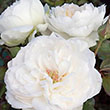
Bolero' is a compact, bushy floribunda rose that grows 3-4 feet tall and 2-3 feet wide. During the summer, it produces old-fashioned,ruffled blooms containing with creamy white petals. Blooms are exquisitely frangrant.
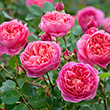
Height: 3 feet
Spread: 30 inches
Sunlight: full sun
Hardiness Zone: 4a
Other Names: English Rose
Group/Class: Austin Rose
Description:
An outstanding rose producing perfectly formed, upward facing coral blooms with small petals of varying shades; heavenly myrrh fragrance; needs full sun and well-drained soil; good disease resistance; very hardy with some protection
Ornamental Features:
Boscobel Rose is clothed in stunning fragrant coral-pink flowers with pink overtones at the ends of the branches from late spring to early fall, which emerge from distinctive red flower buds. The flowers are excellent for cutting. It has forest green deciduous foliage. The oval compound leaves do not develop any appreciable fall color.
Landscape Attributes:
Boscobel Rose is a multi-stemmed deciduous shrub with an upright spreading habit of growth. Its average texture blends into the landscape, but can be balanced by one or two finer or coarser trees or shrubs for an effective composition.
This is a high maintenance shrub that will require regular care and upkeep, and is best pruned in late winter once the threat of extreme cold has passed. Gardeners should be aware of the following characteristic(s) that may warrant special consideration:
- Disease
- Spiny
Boscobel Rose is recommended for the following landscape applications:
- Mass Planting
- Hedges/Screening
- General Garden Use
Planting & Growing:
Boscobel Rose will grow to be about 3 feet tall at maturity, with a spread of 30 inches. It tends to fill out right to the ground and therefore doesn't necessarily require facer plants in front. It grows at a fast rate, and under ideal conditions can be expected to live for approximately 20 years.
This shrub should only be grown in full sunlight. It does best in average to evenly moist conditions, but will not tolerate standing water. It is not particular as to soil type or pH. It is highly tolerant of urban pollution and will even thrive in inner city environments. This particular variety is an interspecific hybrid.
143 found, showing page 5 of 10